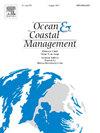在伊比利亚南部减少海鸟与底网相互作用的缓解措施
IF 5.4
2区 环境科学与生态学
Q1 OCEANOGRAPHY
引用次数: 0
摘要
副渔获对全球海鸟种群构成重大威胁。在葡萄牙大陆南部海岸,测试了缓解措施,以减少海鸟与渔船的相互作用。在2021年至2023年期间,本研究评估了视觉威慑(“scarybird”装置)、声学威慑(扩音器广播)的有效性,以及渔民行为的改变——在捕鱼作业中避免丢弃,以尽量减少海鸟的互动。观察员监测了166个捕鱼事件,比较了对照和实验处理。垃圾管理是最有效的威慑,显著减少了海鸟的数量,特别是海鸥(Larus spp.)和北方塘鹅(Morus bassanus)。模型预测表明,当使用废弃物管理时,商业渔船周围的海鸥和北方塘鹅的数量分别减少了37%和47%。这一做法有效地使大部分雀鸟在作业期间远离船只,从而减少了它们被副渔获物捕获的可能性。扩音器的效果有限,与对照组相比,治疗组的海鸟数量更高。scarybird装置在阻止海鸥方面基本上是无效的,除非与废物管理相结合,但在减少与北方塘鹅的互动方面显示出潜力。重要的是,所有缓解措施都没有对每单位努力的着陆量(LPUE)产生负面影响,这有助于渔民接受这些措施。我们的研究结果表明,对渔民的行为进行简单的修改,例如在船上保留丢弃的鱼和内脏,可以作为一种有希望的副渔获物减少措施,可能消除对渔民可能不愿采用的其他不太有效的减少装置的需求。本文章由计算机程序翻译,如有差异,请以英文原文为准。
Mitigation measures to reduce seabird's interactions with bottom-set nets in southern Iberia
Bycatch poses a significant threat to seabird populations globally. On the southern coast of mainland Portugal, mitigation measures were tested to reduce seabird interactions with fishing vessels. Between 2021 and 2023, this study evaluated the effectiveness of a visual deterrent (a 'scarybird' device), an acoustic deterrent (megaphone broadcasts), alongside modification in fisher's behaviour discard management— avoiding discards during fishing operations to minimize seabird interactions. Observers monitored 166 fishing events, comparing control and experimental treatments. Discard management was the most effective deterrent, significantly reducing seabird abundance, particularly gulls (Larus spp.) and northern gannets (Morus bassanus). Model predictions indicated a 37 % and a 47 % reduction in the abundance of gulls and northern gannets, respectively, around commercial fishing vessels when discard management was used. This practice effectively kept a substantial proportion of birds away from the vessel during operations, thereby reducing their vulnerability to bycatch. The megaphone showed limited efficacy, with higher seabird abundance in treatment groups compared to controls. The scarybird device was largely ineffective in deterring gulls unless combined with discard management but showed potential in reducing interactions with northern gannets. Importantly, all mitigation measures did not negatively impact Landings Per Unit Effort (LPUE), which facilitated their acceptance among fishers. Our findings suggest that simple modifications in the fisher's behaviour, such as retaining fish discards and viscera onboard, could serve as a promising bycatch mitigation measure, potentially eliminating the need for additional less effective mitigation devices that fishers may be reluctant to adopt.
求助全文
通过发布文献求助,成功后即可免费获取论文全文。
去求助
来源期刊

Ocean & Coastal Management
环境科学-海洋学
CiteScore
8.50
自引率
15.20%
发文量
321
审稿时长
60 days
期刊介绍:
Ocean & Coastal Management is the leading international journal dedicated to the study of all aspects of ocean and coastal management from the global to local levels.
We publish rigorously peer-reviewed manuscripts from all disciplines, and inter-/trans-disciplinary and co-designed research, but all submissions must make clear the relevance to management and/or governance issues relevant to the sustainable development and conservation of oceans and coasts.
Comparative studies (from sub-national to trans-national cases, and other management / policy arenas) are encouraged, as are studies that critically assess current management practices and governance approaches. Submissions involving robust analysis, development of theory, and improvement of management practice are especially welcome.
 求助内容:
求助内容: 应助结果提醒方式:
应助结果提醒方式:


